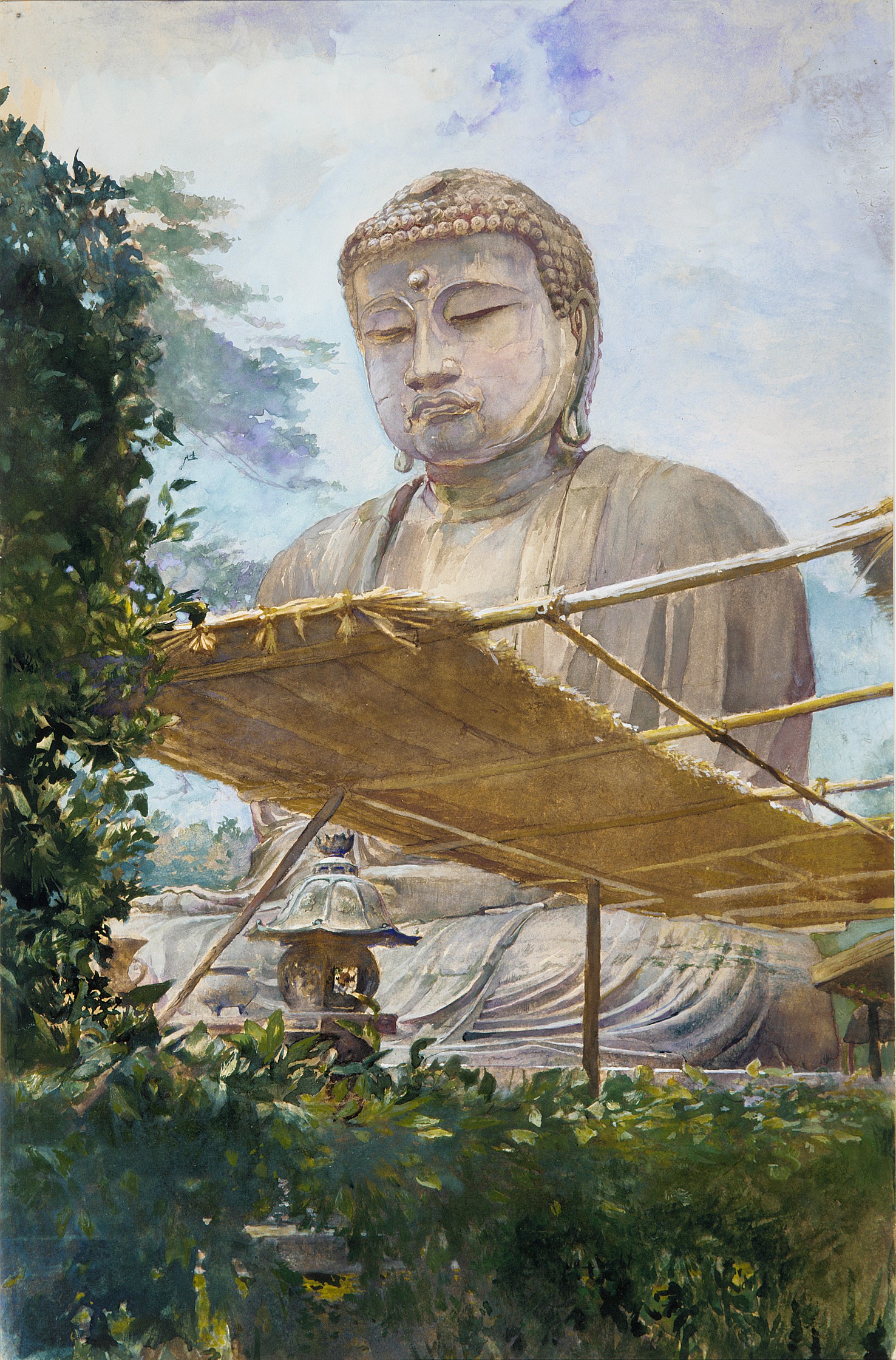The Great Statue of Amida Buddha at Kamakura, Known as the Daibutsu, from the Priest's Garden
John La Farge American
Not on view
On a trip to Japan with Henry Adams in 1886, La Farge enlisted watercolor—the familiar medium of the traveling artist—to create studies for illustrations and to paint sheets for exhibition. He executed this bold and monumental composition after his return to New York, using a watercolor sketch done during his travels as well as photographs that he and Adams had taken. The Daibutsu, or Great Buddha, a fifty-foot-high bronze cast in 1252, is renowned for its colossal size, its peaceful demeanor, and its unusual site in the open air surrounded by mountains and trees.
Due to rights restrictions, this image cannot be enlarged, viewed at full screen, or downloaded.
This artwork is meant to be viewed from right to left. Scroll left to view more.



